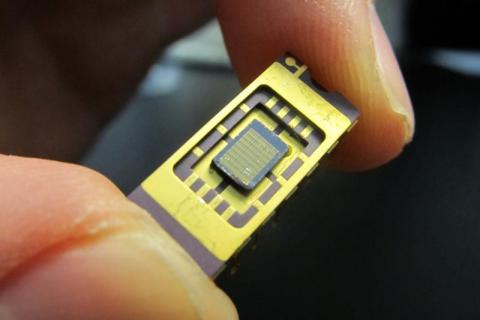Nano is the new green

US engineers unveil a new super fast data transmission device 2,000 times more energy efficient than any device in use today, writes John Holden.
This week, scientists at the Stanford School of Engineering demonstrated their ultrafast nanoscale light-emitting diode (LED). This light-based data transmitter uses thousands of times less energy than today's laser-based systems. In addition, it is able to transmit information at 10 gigabytes per second (just to give you an idea: one movie download is usually around 1 gigabyte).
The device transmits data at approximately 0.25 femto-joules per bit of data. Compare that to today’s average “low” power laser device, which need 500 femto-joules to transmit the exact same information. That is, the new device is 2,000 times faster.
Earlier this year the same research team produced a nanoscale laser that was similar in terms of its efficiency and speed. Unfortunately that device only worked at temperatures of minus-190 degrees Fahrenheit, which made it pretty darn useless from a commercial perspective. The new discovery works at room temperature and so represents a huge step toward the next generation of computer chips.
People will have heard of LED lights before. The type in question here is what’s known as “single-mode LED”, a special type of electronic component that emits light at a single wavelength, just like a laser. Engineers always believed that only lasers could transmit data at fast rates using low power. This new technology is an example of yet another new word to add to your pub lexicon – nanophotonics. This refers to the study of the behaviour of light on the nanometer scale. At the heart of the new device are islands of the light-emitting material indium arsenide, which, when pulsed with electricity, produce light. These are surrounded by photonic crystals that serve as mirrors, bouncing light toward the centre and forcing the ‘islands’ to resonate at a single frequency.
“Low-power, electrically controlled light sources are vital for next-generation optical systems to meet the growing energy demands of the computer industry,” says Jelena Vuckovic, an associate professor of electrical engineering at Stanford. “This moves us in that direction significantly.”
Image top: Jan Petykiewicz, Stanford School of Engineering.
